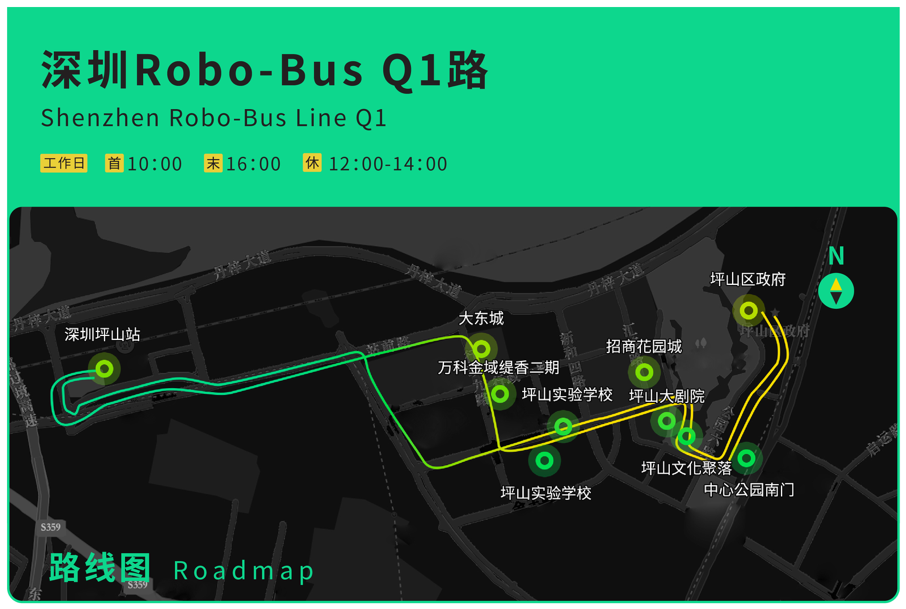The Ministry of Transport issued a document: Steadily promote self-driving passenger transportation services.
Recently, Shenzhen Pingshan District launched the country’s first unmanned public transport monthly pass. Citizens with monthly passes can take Shenzhen’s first microcirculation unmanned public transport line for daily commuting. The total length of the line is about 5 kilometers, with 10 stations set up along the way, running through core locations such as residential areas, schools, theaters, parks and office areas around Shenzhen Pingshan Station. Citizens can sign up for the “Early Bird Program”, apply for a monthly pass for free, check the current location and estimated arrival time of the next minibus on their mobile phone, and use the mini program to scan the code to board the bus.
Source: Qingzhou Zhihang
Urban road traffic microcirculation refers to making full use of secondary roads or branch roads in the city to divert the expressway and the main road to relieve the traffic pressure on the main roads around the area. The microcirculation bus line mainly meets the transfer needs of rail transit stations within 3-5 kilometers. The route is fixed, the distance is short, and the number of trains is high. It is a scene suitable for automatic driving.
Shenzhen Pingshan Station is the transportation hub of the eastern part of Shenzhen. The average daily passenger flow in the past two years has exceeded 20,000, and the maximum daily average passenger flow has exceeded 30,000, which is increasing year by year.
The unmanned bus service in Pingshan District, Shenzhen is provided by the autopilot company “Qingzhou Zhihang”, using the “Dragon Boat ONE” model of the Qingzhou unmanned minibus. The Dragon Boat ONE is a pure electric new energy vehicle with 9 passenger seats and 1 driving seat, but it is not the driver who sits in the driving seat, but the safety officer who monitors the normal operation of the vehicle.
Qingzhou Zhihang said that the Dragon Boat ONE can realize 360-degree perception of no blind spots around the body, the farthest sensing distance in front is more than 200 meters, the body length is about 5.9 meters, and the speed is 20-50 kilometers per hour, except for pedestrians and vehicles. Basic functions such as automatic lane change, automatic steering, traffic light recognition, etc., can also cope with various urban complex traffic scenes, such as crossing intersections with mixed pedestrians and vehicles, congestion of vehicles behind, ghost probes, etc.
Source: Qingzhou Zhihang

